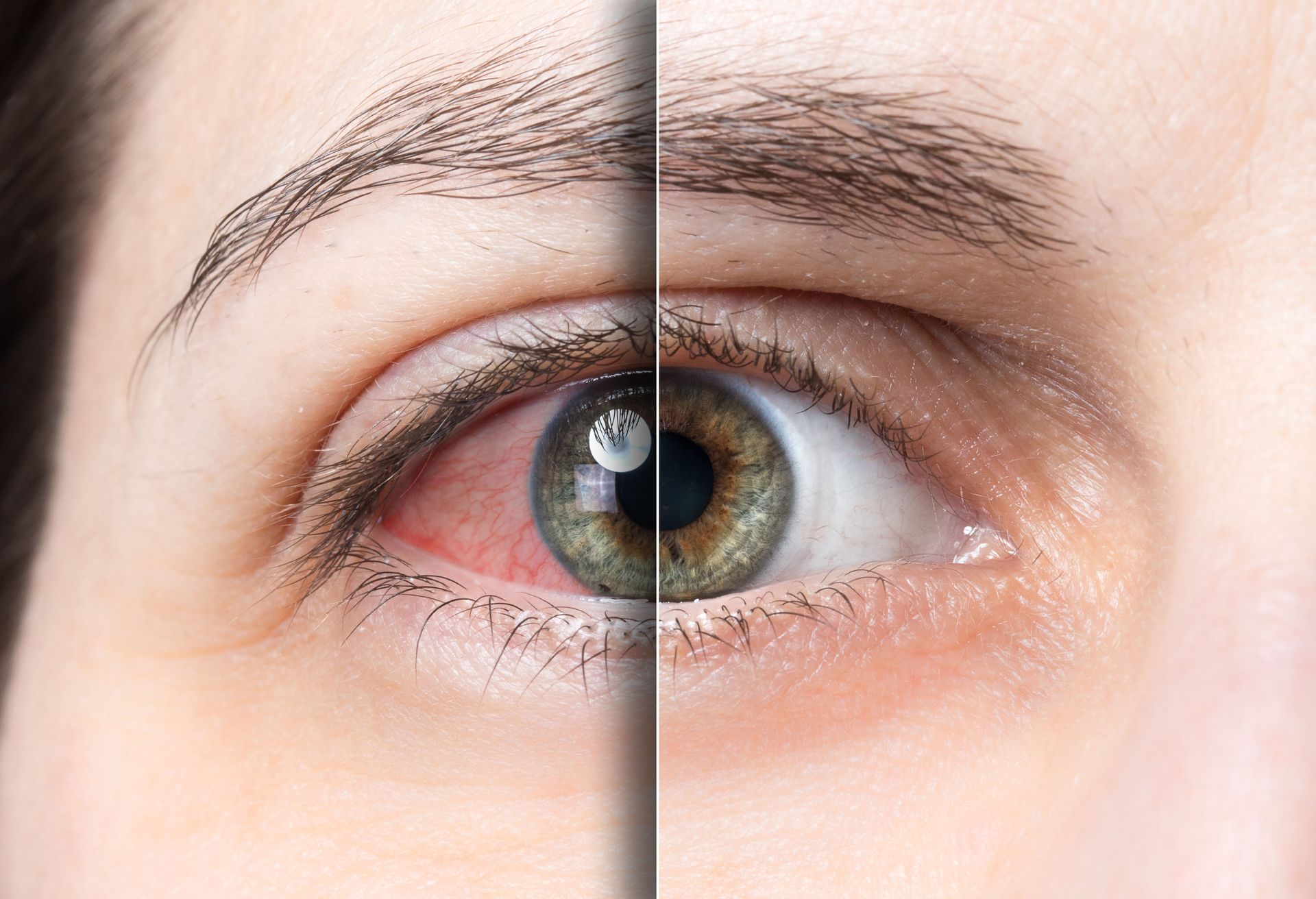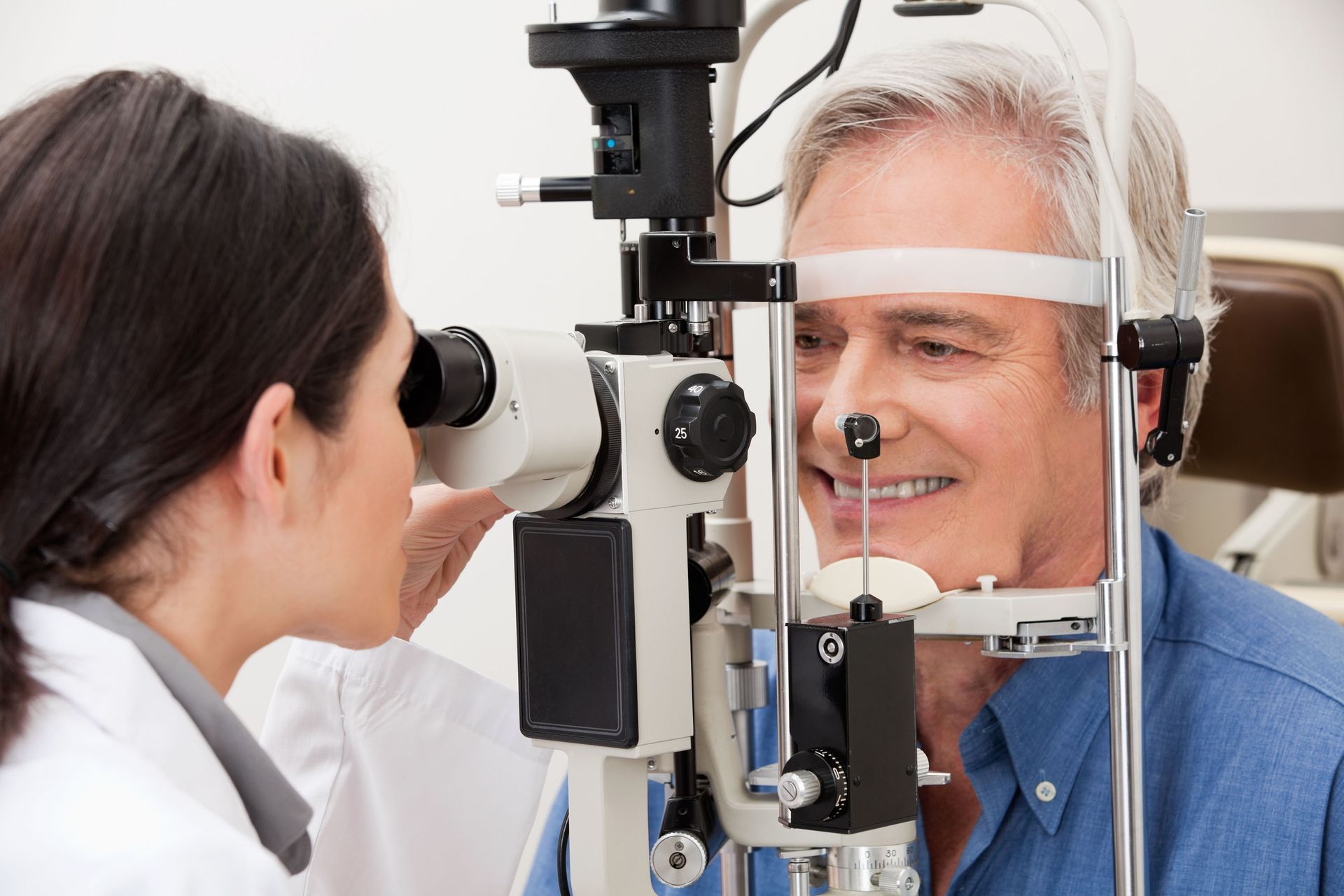Contacts and Dry Eyes: When to Switch, Stop, or See a Doctor
By Ashley Lofgren | November 21, 2025
Understanding the relationship between contact lens use and dry eye syndrome is crucial for maintaining both comfort and eye health. Contact lenses, while convenient and often preferred for correcting vision, can sometimes lead to discomfort and exacerbate dry eye symptoms. This article explores when to consider changing contact lens habits and when to seek professional advice. Recognizing the symptoms early and knowing the appropriate steps can help mitigate issues before they affect your quality of life. As we delve into the topic, it’s important to ensure you’re equipped with the knowledge to make informed decisions about your eye health.
Recognize the Symptoms of Contact Lens–Related Dry Eyes
When contact lenses cause dry eyes, the symptoms are often similar to regular dry eye syndrome, but they may be more pronounced. Common signs include a gritty or sandy feeling in the eyes, irritation, and redness. Blurred vision and an increase in discomfort as the day progresses are also key indicators. Though contact lens solutions and rewetting drops can provide temporary relief, persistent symptoms need more attention.
Stinging and burning sensations are other signs that your contact lenses might be causing dry eye syndrome. When the tear film that naturally lubricates the eye is compromised, these sensations can become more frequent and bothersome. Some individuals may also notice increased light sensitivity and a decrease in their contact lens tolerance. If you often find yourself removing your lenses early due to discomfort, it can be a sign that your lenses are not compatible with your eye health conditions. Identifying these symptoms early can prevent further irritation and damage to the eyes.
Regular blinking is essential for maintaining eye moisture, but contact lens wearers may develop the habit of blinking less. This can exacerbate dry eye symptoms and lead to further dryness. Moreover, environmental factors, such as spending long hours in air-conditioned rooms or in front of computer screens, can intensify the problem. People who alternate between glasses and contact lenses might manage symptoms better by giving their eyes periodic relief from lens use. According to Eyecare Business, nearly 48% of U.S. adults rely on prescription glasses alone, 12% alternate between glasses and contact lenses, and just 3% report using only contacts. This balance between lens wear and rest demonstrates how simple adjustments can play a key role in reducing dryness and improving long-term eye comfort. Consistently paying attention to how your eyes feel when using contact lenses is key to managing symptoms effectively.
Manage Dry Eye Discomfort With Proper Care and Habits
To effectively manage symptoms of dry eye syndrome while wearing contact lenses, it’s crucial to select the right lens type. Some lenses are specifically designed to retain moisture and are made from high-oxygen-permeable materials. Trying out different brands and types with the help of an eye care professional can significantly alleviate dry eye symptoms. Incorporating a proper cleaning routine and using prescribed solutions can prevent deposits that exacerbate dryness. Applying rewetting drops regularly is another proactive approach to minimizing discomfort.
Adjusting habits around computer use and exposure to environmental stressors can also be beneficial. Taking regular breaks from staring at screens, using humidifiers, and wearing sunglasses outdoors can protect the eyes from further dryness. Additionally, practicing good lens hygiene—like not wearing them longer than recommended—plays a significant role in managing symptoms. For some, alternating between contact lenses and glasses can bring much-needed relief to their eyes. This practice allows the lenses to rest while maintaining clear vision. Establishing a flexible routine where glasses are used for certain activities can dramatically improve comfort. Furthermore, regular eye check-ups are crucial to monitoring changes in eye health and getting personalized advice.
Consider Switching to Lenses Designed for Dry Eyes
Introducing advancements in contact lens design over the years has resulted in a wide variety of options aimed at improving comfort. If your current lenses are contributing to dry eye symptoms, consider exploring lenses with higher moisture content or silicone hydrogel materials. Consultation with an eye care professional is essential before switching brands or types. They can recommend lenses known for their ability to retain moisture and their high oxygen permeability, which are crucial for healthy, comfortable lens wear. It’s important to evaluate factors such as your lifestyle, daily activities, and specific eye health needs when making a switch.
When a switch is necessary, consider lenses with advanced designs like daily disposables. These lenses mitigate protein deposits and other buildups that can aggravate dryness by providing freshness every day. Multifocal and toric lenses are also available for those with specific vision correction needs, and they come in dry eye-friendly materials. The process of switching lenses can be trial and error, but attentive monitoring of comfort levels can guide you to the best solution. Changing your lens care solution is another factor worth considering, as some may be more compatible with your eyes than others.
Know When to Stop Wearing Contact Lenses
Deciding to stop using contact lenses due to dry eyes often comes after other management strategies have been exhausted. If symptoms persist despite switching lens types, brands, and utilizing drops or supplements, it may be time to give your eyes a break. Prolonged discomfort, increased redness, significant changes in vision, or recurrent eye infections are strong indicators that a pause in contact lens use is warranted. Continuous irritation can worsen dry eye syndrome and potentially lead to more serious complications. A temporary cessation can provide relief and prevent further aggravation.
It’s important to note that stopping contact lens use isn't always permanent. Taking a break can allow the eyes’ natural moisture to restore and the ocular surface to heal. During this period, maintaining visual clarity with prescription glasses is crucial. Reassessing contact lens use with an eye care specialist after a break can ensure safe resumption if desired. During the pause, consider integrating lifestyle changes and treatments that address the root cause of your dry eye syndrome. Increasing hydration, reducing screen time, and using prescription treatments can support your recovery. If reintroducing contact lenses, proceed gradually to monitor any returning symptoms. Regular appointments with a healthcare professional can help guide a long-term vision care strategy. Being proactive in your health decisions is vital for preventing dry eyes from recurring after resuming contact lens use.
See an Eye Doctor for Persistent Dry Eye Symptoms
Recognizing the need for professional medical advice is crucial when managing persistent dry eye symptoms. When over-the-counter solutions and adjustments in lens care fail to mitigate symptoms, a visit to your eye doctor becomes necessary. Symptoms like severe pain, persistent redness, and significant vision changes warrant immediate attention. A doctor can perform thorough examinations to determine the source and extent of your dry eye syndrome, offering personalized treatment options. Regular consultations ensure that any developing issues are addressed promptly, reducing the risk of complications.
Doctors can provide access to prescription medications that might not be available over the counter, offering relief for severe or chronic conditions. Additionally, they can perform tests to evaluate tear production and quality, providing insights into the best treatment plan. A detailed discussion about your lifestyle, habits, and any medications you take can offer clues to contributing factors for dry eyes. Sometimes, dry eye symptoms are a sign of underlying health conditions that need addressing. Trusted professional advice not only treats symptoms but also enhances overall eye health.
Determining when to switch, stop, or seek medical advice regarding contacts and dry eyes involves recognizing symptoms, understanding options, and engaging in informed discussions with eye care professionals. Staying proactive is key to preventing symptoms from escalating and preserving your eye health. Regularly reviewing and adjusting your contact lens habits can lead to healthier eyes and improved comfort. Employing a combination of proper lens care, environmental adjustments, and professional consultations can provide optimal relief and management of dry eye syndrome. As eye health is integral to our quality of life, addressing concerns promptly ensures long-term comfort and visual clarity. Reach out to Centennial Eye & Cosmetics Associates to learn more about your options today.



Share On: